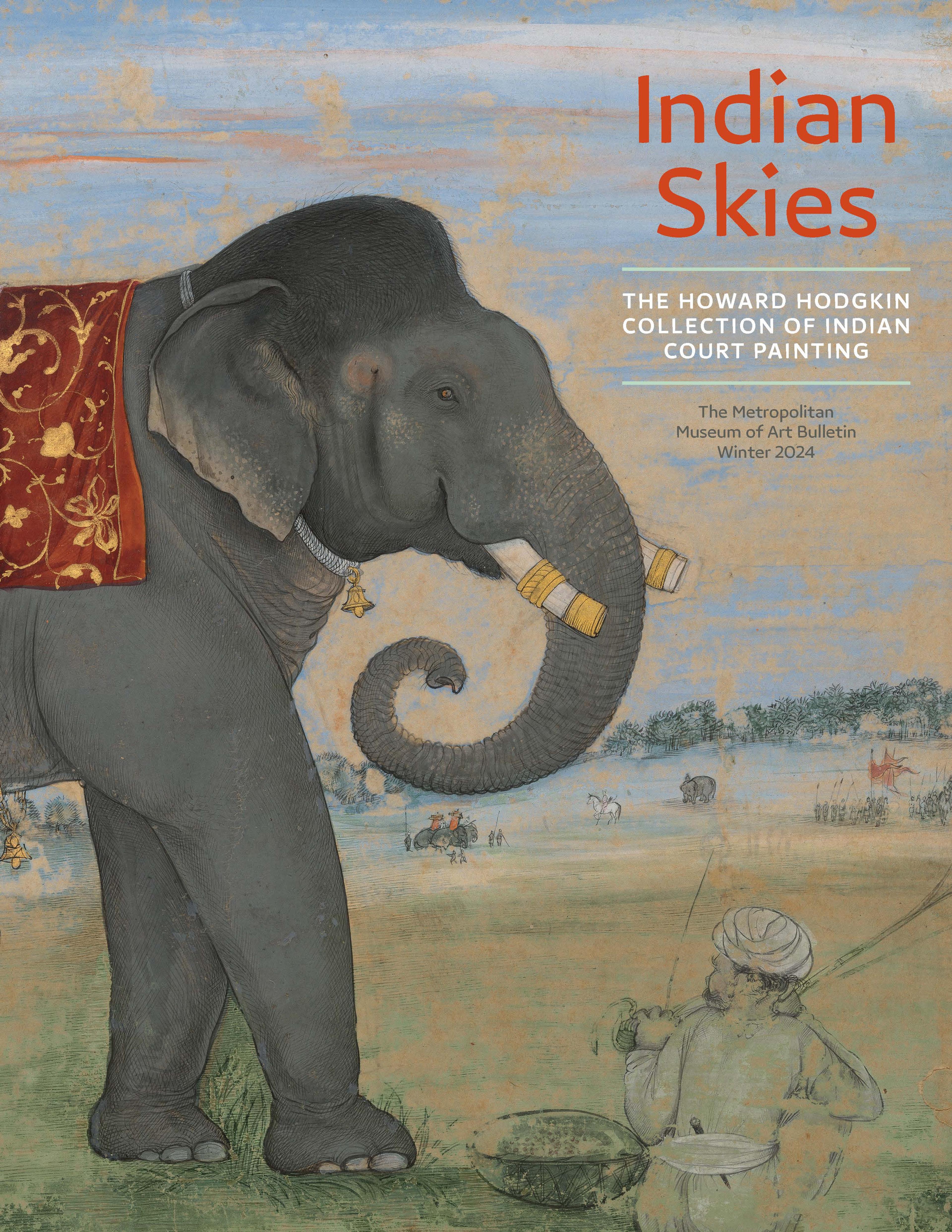Harihara Sadashiva
In this extraordinary visualization of Shiva, the god is shown in his syncretic ascetic form, or Harihara Sadashiva, which combines in one body the attributes of Shiva (Hara) and Vishnu (Hari). He is understood conceptually to have five heads and ten arms; the attributes of Shiva are arrayed to the left, and those of Vishnu to the right. He wears a garland of severed heads and a leopard-skin waist cloth. His ascetic nature is further signaled by his braided dreadlocks, his garland of leaves from the hallucinogenic datura plant (sacred to Shiva), and his eyes, which are cast upward in a yogic trance. The painter’s patron, Raja Sidh Sen (r. 1684–1727) of the hill kingdom of Mandi, was renowned as a devotee of Shiva. His intense personal identification suggests that this powerful representation may reflect the raja’s own physique.
Artwork Details
- Title: Harihara Sadashiva
- Date: ca. 1710–20
- Culture: India, Himachal Pradesh, Mandi
- Medium: Opaque watercolor and ink on paper
- Dimensions: Image: 13 × 10 5/8 in. (33 × 27 cm)
Framed: 19 × 16 5/8 × 3/4 in. (48.3 × 42.2 × 1.9 cm) - Classification: Paintings
- Credit Line: Howard Hodgkin Collection, Purchase, Gift of Florence and Herbert Irving, by exchange, 2022
- Object Number: 2022.245
- Rights and Reproduction: Image © Ashmolean Museum, University of Oxford
- Curatorial Department: Asian Art
More Artwork
Research Resources
The Met provides unparalleled resources for research and welcomes an international community of students and scholars. The Met's Open Access API is where creators and researchers can connect to the The Met collection. Open Access data and public domain images are available for unrestricted commercial and noncommercial use without permission or fee.
To request images under copyright and other restrictions, please use this Image Request form.
Feedback
We continue to research and examine historical and cultural context for objects in The Met collection. If you have comments or questions about this object record, please complete and submit this form. The Museum looks forward to receiving your comments.
